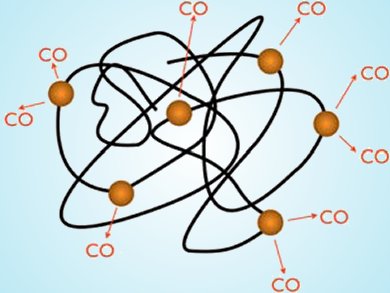At low concentrations, carbon monoxide has a cytoprotective role and the potential therapeutic effects of CO are widely recognized in inflammation, hypertension, and cerebral malaria. Its toxicity can also be harnessed through the precise delivery of high concentrations to specific locations such as tumors. For this, the development of CO-releasing molecules (CORMs) as benign CO sources is highly desirable.
Peter Kunz and colleagues, Heinrich Heine University, Düsseldorf, Germany, have synthesized two polymers with pendant ligands for coordination of Mn(CO)3-based CORMs. The fac-Mn(CO)3 fragment was bound to a methacrylate or methacrylamide polymer backbone by bis(pyridylmethyl)amine-type ligands. The polymers released about two moles of CO per mole complex upon irradiation. The molecular weights and size distributions of these polymers coupled with their low cytotoxicity mean they can be used for delivery of these or other CO-releasing metallodrugs to tumor tissue or sites of inflammation.
Image: © Wiley-VCH
- Polymer Conjugates of Photoinducible CO-Releasing Molecules
N. E. Brückmann, M. Wahl, G. J. Reiß, M. Kohns, W. Wätjen, P. C. Kunz,
Eur. J. Inorg. Chem. 2011.
DOI: 10.1002/ejic.201100545




